Extinct Tree Grows Anew From Ancient Jar Of Seeds Unearthed By Archaeologists

Extinct tree grows anew from ancient jar of seeds unearthed by archaeologists
by Stephen Messenger
“For thousands of years, Judean date palm trees were one of the most recognizable and welcome sights for people living in the Middle East — widely cultivated throughout the region for their sweet fruit, and for the cool shade they offered from the blazing desert sun.
From its founding some 3,000 years ago, to the dawn of the Common Era, the trees became a staple crop in the Kingdom of Judea, even garnering several shout-outs in the Old Testament. Judean palm trees would come to serve as one of the kingdom’s chief symbols of good fortune; King David named his daughter, Tamar, after the plant’s name in Hebrew.
By the time the Roman Empire sought to usurp control of the kingdom in 70 AD, broad forests of these trees flourished as a staple crop to the Judean economy — a fact that made them a prime resource for the invading army to destroy. Sadly, around the year 500 AD, the once plentiful palm had been completely wiped out, driven to extinction for the sake of conquest.
In the centuries that followed, first-hand knowledge of the tree slipped from memory to legend. Up until recently, that is.
During excavations at the site of Herod the Great’s palace in Israel in the early 1960’s, archeologists unearthed a small stockpile of seeds stowed in a clay jar dating back 2,000 years. For the next four decades, the ancient seeds were kept in a drawer at Tel Aviv’s Bar-Ilan University. But then, in 2005, botanical researcher Elaine Solowey decided to plant one and see what, if anything, would sprout.
“I assumed the food in the seed would be no good after all that time. How could it be?“ said Solowey. She was soon proven wrong.
Amazingly, the multi-millennial seed did indeed sprout — producing a sapling no one had seen in centuries, becoming the oldest known tree seed to germinate.
Today, the living archeological treasure continues to grow and thrive; In 2011, it even produced its first flower — a heartening sign that the ancient survivor was eager to reproduce. It has been proposed that the tree be cross-bred with closely related palm types, but it would likely take years for it to begin producing any of its famed fruits. Meanwhile, Solowey is working to revive other age-old trees from their long dormancy.”
***Does anyone in the know have any comments?
(Source: Tree Hugger)
More Posts from Primordialbitch and Others

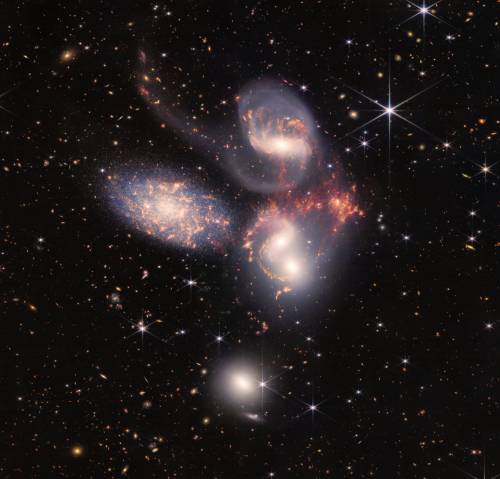
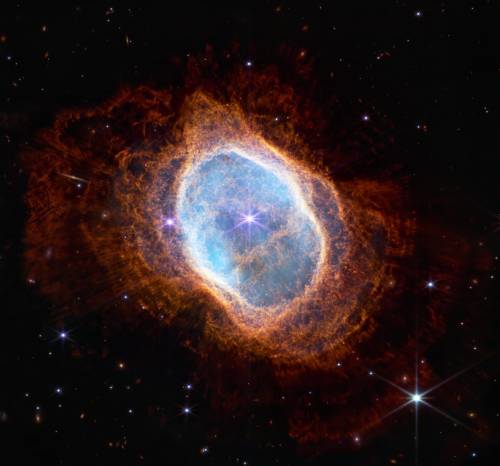
NASA’s Webb Space Telescope Reveals Astounding, Unprecedented Views of the Universe
Neutron Stars Collide
The recent detection of two neutron stars colliding has sent waves through spacetime and the astronomical community.
You may have seen headlines in the news and not really know why this is such a big deal.
Here’s the Sparknotes version:
A while back a thing called “gravitational waves” were observed for the first time. These are fluctuations in the fabric of spacetime that propagate out from their source just like light, i.e. radially/like a pebble dropped in water. General relativity shows us that the acceleration of objects with mass cause this event to occur.
Until fairly recently these have been too difficult to observe and in fact Einstein didn’t think we’d ever be able to. A series of laser interferometers have disproved that assumption. Using high-precision analysis of how the lasers shift as a gravitational wave moves through them scientists can now see the small movements in the universe that are gravitational waves.
Importantly, we now have three such observatories capable of working together. Known as the “LIGO-Virgo” team, two observatories in the U.S. and one in Italy detected these shifting in spacetime. Three is a pretty magical number in coordinating detections like this because you can then triangulate where the signal comes from and…
BINGO! Within hours optical observatories were zeroing in on the predicted source of these spacetime fluctuations. Indeed, they confirmed the presence of a previously unseen glow:

What you’re looking at is the glow of two neutron stars colliding into each other. This explosion has the energy of approximately 260,000,000 suns.
Each of these stars has such a large mass that the waves in spacetime are actually detectable from a distance of 140 million light-years away.
Impressive, right? Although you might agree, this still begs the question of what exactly we’ve learned from this event. Well - a lot. Since this is the first observation we have made with both gravitational wave observatories and more traditional astronomical observatories (i.e. light detecting ones) we’ve been able to put some numbers on the phenomenon. Here are some of the things we’ve learned:
1) Gravitational waves propagate at the speed of light!
2) A huge portion of heavier elements (like gold and uranium!) may have their origins in neutron star collisions! Nuclear synthesis in stars more typical like the sun is restricted to closer to 10% of the star’s mass being able to fuse elements together into new ones. This process is actually quite inefficient (actually, YOU are a more efficient radiator than the sun!) and it becomes more difficult for a star to fuse the heavier elements. Before this event we didn’t have a good way of explaining why we found so much more heavy stuff than stellar nuclear synthesis could account for. Now? Baboom! This neutron star collision resulted in the synthesis of so much gold that it’s about 150 times more massive than the Earth! Cha-Ching!
So if you’re an amateur (or professional, I suppose) astronomer and you want to see this collision, now dubbed GW170817, and you build a little radio telescope (another post!), you’ll be able to detect this collision for the next 5-10 years due to the afterglow.
(Image credit: NASA and ESA)
Black Holes are NICER Than You Think!
We’re learning more every day about black holes thanks to one of the instruments aboard the International Space Station! Our Neutron star Interior Composition Explorer (NICER) instrument is keeping an eye on some of the most mysterious cosmic phenomena.

We’re going to talk about some of the amazing new things NICER is showing us about black holes. But first, let’s talk about black holes — how do they work, and where do they come from? There are two important types of black holes we’ll talk about here: stellar and supermassive. Stellar mass black holes are three to dozens of times as massive as our Sun while supermassive black holes can be billions of times as massive!

Stellar black holes begin with a bang — literally! They are one of the possible objects left over after a large star dies in a supernova explosion. Scientists think there are as many as a billion stellar mass black holes in our Milky Way galaxy alone!
Supermassive black holes have remained rather mysterious in comparison. Data suggest that supermassive black holes could be created when multiple black holes merge and make a bigger one. Or that these black holes formed during the early stages of galaxy formation, born when massive clouds of gas collapsed billions of years ago. There is very strong evidence that a supermassive black hole lies at the center of all large galaxies, as in our Milky Way.

Imagine an object 10 times more massive than the Sun squeezed into a sphere approximately the diameter of New York City — or cramming a billion trillion people into a car! These two examples give a sense of how incredibly compact and dense black holes can be.
Because so much stuff is squished into such a relatively small volume, a black hole’s gravity is strong enough that nothing — not even light — can escape from it. But if light can’t escape a dark fate when it encounters a black hole, how can we “see” black holes?

Scientists can’t observe black holes directly, because light can’t escape to bring us information about what’s going on inside them. Instead, they detect the presence of black holes indirectly — by looking for their effects on the cosmic objects around them. We see stars orbiting something massive but invisible to our telescopes, or even disappearing entirely!
When a star approaches a black hole’s event horizon — the point of no return — it’s torn apart. A technical term for this is “spaghettification” — we’re not kidding! Cosmic objects that go through the process of spaghettification become vertically stretched and horizontally compressed into thin, long shapes like noodles.

Scientists can also look for accretion disks when searching for black holes. These disks are relatively flat sheets of gas and dust that surround a cosmic object such as a star or black hole. The material in the disk swirls around and around, until it falls into the black hole. And because of the friction created by the constant movement, the material becomes super hot and emits light, including X-rays.
At last — light! Different wavelengths of light coming from accretion disks are something we can see with our instruments. This reveals important information about black holes, even though we can’t see them directly.

So what has NICER helped us learn about black holes? One of the objects this instrument has studied during its time aboard the International Space Station is the ever-so-forgettably-named black hole GRS 1915+105, which lies nearly 36,000 light-years — or 200 million billion miles — away, in the direction of the constellation Aquila.
Scientists have found disk winds — fast streams of gas created by heat or pressure — near this black hole. Disk winds are pretty peculiar, and we still have a lot of questions about them. Where do they come from? And do they change the shape of the accretion disk?

It’s been difficult to answer these questions, but NICER is more sensitive than previous missions designed to return similar science data. Plus NICER often looks at GRS 1915+105 so it can see changes over time.
NICER’s observations of GRS 1915+105 have provided astronomers a prime example of disk wind patterns, allowing scientists to construct models that can help us better understand how accretion disks and their outflows around black holes work.

NICER has also collected data on a stellar mass black hole with another long name — MAXI J1535-571 (we can call it J1535 for short) — adding to information provided by NuSTAR, Chandra, and MAXI. Even though these are all X-ray detectors, their observations tell us something slightly different about J1535, complementing each other’s data!
This rapidly spinning black hole is part of a binary system, slurping material off its partner, a star. A thin halo of hot gas above the disk illuminates the accretion disk and causes it to glow in X-ray light, which reveals still more information about the shape, temperature, and even the chemical content of the disk. And it turns out that J1535’s disk may be warped!

Image courtesy of NRAO/AUI and Artist: John Kagaya (Hoshi No Techou)
This isn’t the first time we have seen evidence for a warped disk, but J1535’s disk can help us learn more about stellar black holes in binary systems, such as how they feed off their companions and how the accretion disks around black holes are structured.
NICER primarily studies neutron stars — it’s in the name! These are lighter-weight relatives of black holes that can be formed when stars explode. But NICER is also changing what we know about many types of X-ray sources. Thanks to NICER’s efforts, we are one step closer to a complete picture of black holes. And hey, that’s pretty nice!
Make sure to follow us on Tumblr for your regular dose of space: http://nasa.tumblr.com.
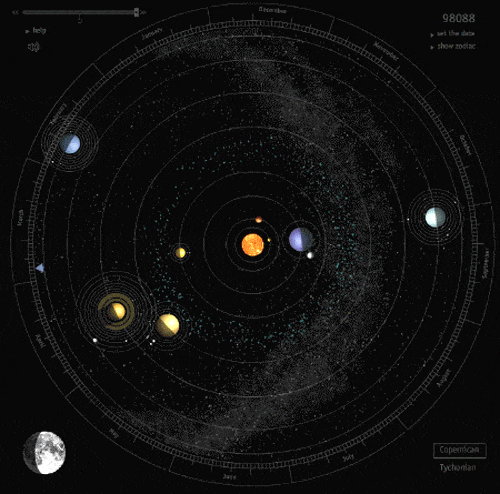
What's a neutron star? I read about them in Bill Bryson's book, but I couldn't figure out why a neutron start would happen in the first place?
When massive stars collapse, the core of the star gets compressed extremely tightly by the force of its own gravity. As the core collapses, the electrons and protons in the core get closer and closer together. Eventually, the core gets so dense that the electrons and protons are forced together, combining into neutrons. The entire core becomes essentially a solid ball of neutrons, as dense as an atomic nuclei. The outer layers of the star, which are also rushing in towards the core, bounce off of this rock-hard layer of neutrons and whiz off into space, creating a supernova and leaving behind a neutron star at the center. And all of this happens in less than a second. Pretty wild. To summarize: neutron stars are giant balls of neutrons that resulted when a stellar core collapsed and became so dense the protons and electrons combined into neutrons.
Side note: Robert L. Forward wrote a really interesting novel called Dragon’s Egg, which was about intelligent life on a neutron star! It’s quite an interesting read, and you learn a whole lot about neutron stars since the author has a Ph.D in physics. If you want a copy, you can find it here; you won’t find it at a bookstore because it’s out of print, but you can find a used copy online (I linked to one). Let me know if you have any other questions, I’m happy to answer them!
planetarium presenters trying to explain to a busload of 4th graders how incomprehensibly vast space is
Here’s one good thing to come out of 2020:
Paleontologists completed a life-sized replica of Sue, the most complete T. Rex ever found.

And she is freaking GORGEOUS!
As I read more about this beauty, I found out some new details regarding things I thought I previously knew about the beast that was Tyrannosaurus Rex, and I’m going to share them with you.
First, and most obvious, her size:

This is nothing new, we all figured T. Rex was big, but I for one never stopped to consider exactly how big it was. Nobody ever really knows what to imagine when they read about something the size of a whale that walked around and ate everything it could kill.
Speaking of eating things, I just want to remind you all that T. Rex had–by miles–the strongest bite of any terrestrial animal living or dead, somewhere around six and a half tons of force. That’s over six times greater than the current estimate of what Allosaurus was capable of, and three times what was delivered by the highest measured reading of the living title holder–the estuarine crocodile. It didn’t have to waste time swinging its head open-mouthed like Saurophaganax for a little extra oomph, or grow fancy serrated teeth like Carcharodontosaurus to cut pieces out of its prey. It opted for the simplest approach: get its mouth around something and crush it to death; imagine the full weight of an elephant on whatever was between this thing’s jaws.
“How did it find something to eat?” I hear you asking. “It can’t see something if it doesn’t move, right?”
Listen, I love Jurassic Park too, but that’s a big crock of shit.

Notice how both her eyes face forward. That gives her binocular vision (the ability to focus both eyes on one target, like you and I). More importantly it means she has impeccable depth perception due to overlapping fields of vision from each, large, eyeball. Researchers agree that T. Rex not only had incredible vision, but that it was probably better than most modern animals–including eagles, hawks, and owls–and that she could likely spot something three and a half miles away. If something that big can see that well, it doesn’t matter if you move or not, she’d be able to tell if it was an animal trying to hide or a piece of vegetation. So pray she isn’t hungry if she lays eyes on you. And even if by some miracle she didn’t see you, she’d still smell you.
If she decided you looked tasty, you probably wouldn’t hear her coming as much as you’d feel her. Modern science indicates that T. Rex didn’t roar like in Jurassic Park, but rather bellowed or maybe even hissed like crocodilians. If she were on to you, you’d most likely feel this sense of unease creep up your spine as a low-pitched rumble in the air permeated through you. You wouldn’t know what it was or where it was coming from until you hear her footfalls. By then it’s too late–you could try to run but she’d probably catch you. There’s plenty on YouTube that reconstructs what T. Rex may have sounded like, and it’s legitimately haunting.
To wrap all of this up, the one bit of good that came out of the cursed year that is 2020 is that this wonderful child of science and art came into the world, and reaffirmed my respect and admiration for the eight ton slab of muscle and teeth that is this magnificent creature.
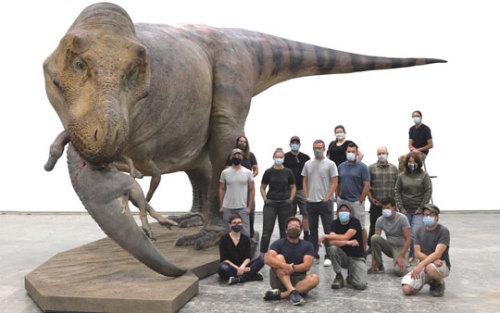
…and it is nothing if not magnificent.

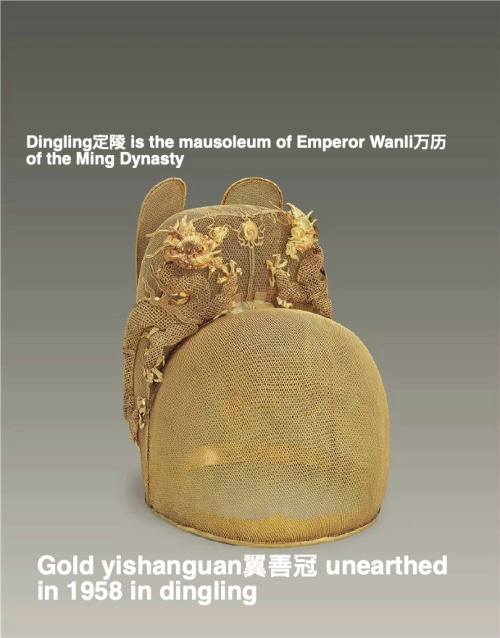
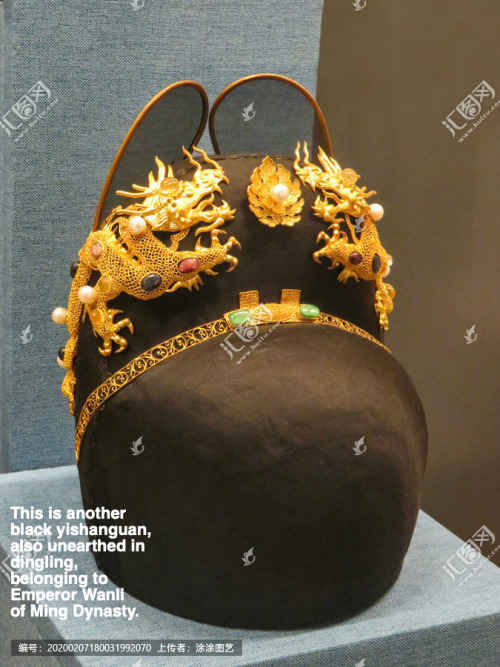
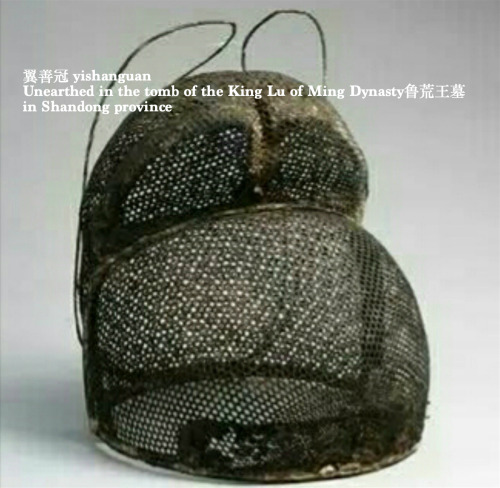

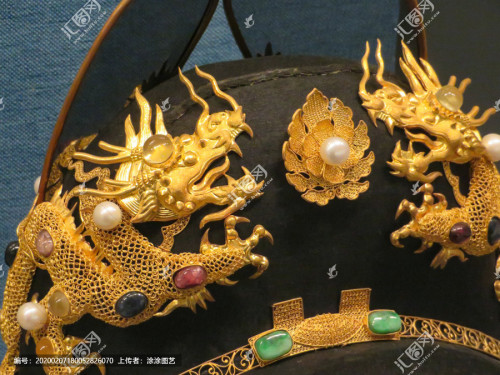
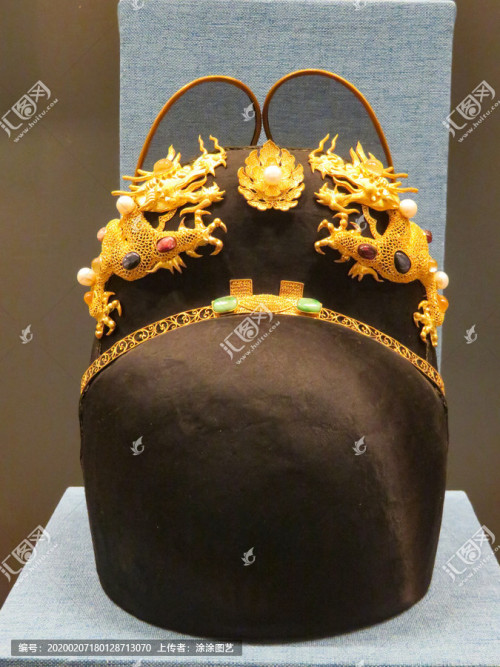
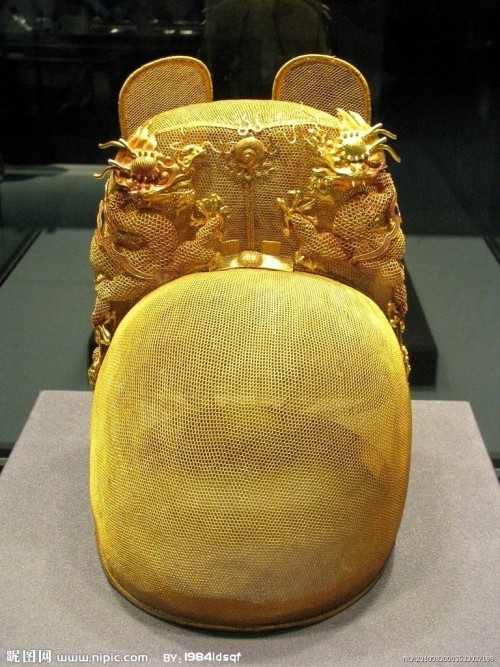
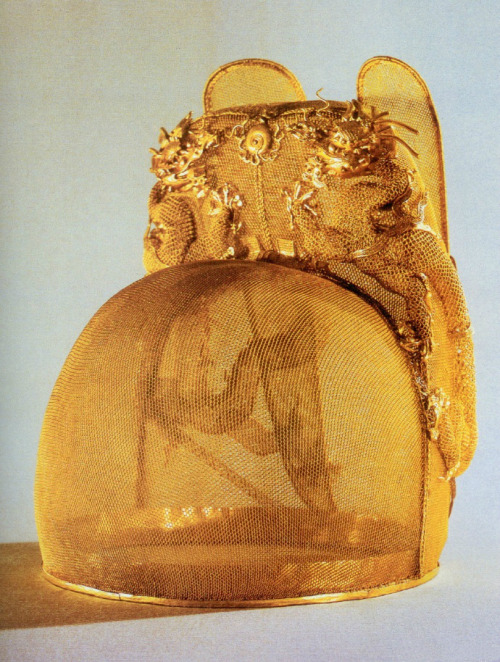


翼善冠yi-shan-guan, a type of hat in Chinese hanfu for ancient emperors and kings.
The term first appeared in Tang Dynasty and invented by Emperor Taizong of Tang. Quotes according to the official records of Tang, Song and Ming Dynasty. “唐贞观中,太宗采古制为翼善冠,自服之。朔望视朝,以常服及帛练裙襦通着之。若服袴褶,又与平巾帻通用。见宋王溥《唐会要.舆服上》﹑《旧唐书.舆服志》。明永乐三年,定皇帝常服冠以乌纱覆之,折角向上,亦名翼善冠。见《明史.舆服志二》。”
The yishanguan also has a corresponding hat of very similar shape in the official class and the commoner class, called wushamao乌纱帽, and in fact the yishanguan can be considered a variant of wushamao.
Actually yishanguan does have another name, called wu-sha-zhe-shang-jin乌纱折上巾, which means a hat made of black gauze with folded wings upward, and that’s what distinguishes it from an ordinary wushamao.
As for the origin of wushamao, it is futou幞头 in the Tang Dynasty. Futou in the Tang Dynasty originates from fujin幅巾 in the Han Dynasty. In the Han Dynasty, people wrapped their heads in a whole pair of soft cloth, so it was called fujin幅巾(It literally means a whole piece of cloth).

Some wushamao without wings, worn by officials, are similar in shape to the Yishanguan worn by the emperor. In Chinese historical dramas and costume dramas, jin-yi-wei锦衣卫, the imperial guards of secret service agent in the emperor’s court often wore this kind of wushamao without wings. And most wushamao have flush, long oval wings. There is a type of wushamao with particularly slender wings that is inherited from the Song Dynasty and is considered more formal.
The pictures below are ancient wushamao from the museums’ collection, as well as portraits of Ming Dynasty officials.


Because jinyiwei锦衣卫 resembles ancient agents, it is very popular among Chinese artists, who often draw characters wearing jinyiwei-style hanfu.

Then again, the following pictures are of Ming emperors wearing yishanguan. These pictures are accurate for reference.



Animated version drawn by 燕王WF

There are some ancient paintings from the Song and Ming dynasties, on which people are wearing various kinds of wushamao.






The above is the brief introduction about yishanguan and wushamao, after that I will also introduce more other types of hanfu hats.
seeing the photos from Webb up against photos from Hubble just makes me… I don’t even know like, wow! Look at that!








-
 martinie-escargo liked this · 4 weeks ago
martinie-escargo liked this · 4 weeks ago -
 luckyicekitsune liked this · 2 months ago
luckyicekitsune liked this · 2 months ago -
 cytherean-sunset liked this · 2 months ago
cytherean-sunset liked this · 2 months ago -
 fflewddurfflam7 liked this · 7 months ago
fflewddurfflam7 liked this · 7 months ago -
 reraen reblogged this · 7 months ago
reraen reblogged this · 7 months ago -
 reraen liked this · 7 months ago
reraen liked this · 7 months ago -
 paleasamoon reblogged this · 7 months ago
paleasamoon reblogged this · 7 months ago -
 paleasamoon liked this · 7 months ago
paleasamoon liked this · 7 months ago -
 nightfloweruponahill reblogged this · 7 months ago
nightfloweruponahill reblogged this · 7 months ago -
 nightfloweruponahill liked this · 7 months ago
nightfloweruponahill liked this · 7 months ago -
 rjwinterfell reblogged this · 7 months ago
rjwinterfell reblogged this · 7 months ago -
 rjwinterfell liked this · 7 months ago
rjwinterfell liked this · 7 months ago -
 fflewddurfflam7 reblogged this · 7 months ago
fflewddurfflam7 reblogged this · 7 months ago -
 until-my-teeth-fell-out liked this · 7 months ago
until-my-teeth-fell-out liked this · 7 months ago -
 skoggiis reblogged this · 7 months ago
skoggiis reblogged this · 7 months ago -
 rabidgeneralgrievous reblogged this · 7 months ago
rabidgeneralgrievous reblogged this · 7 months ago -
 rabidgeneralgrievous liked this · 7 months ago
rabidgeneralgrievous liked this · 7 months ago -
 horsemage liked this · 7 months ago
horsemage liked this · 7 months ago -
 sentient-carrot reblogged this · 7 months ago
sentient-carrot reblogged this · 7 months ago -
 beau-rebloga-coisas reblogged this · 7 months ago
beau-rebloga-coisas reblogged this · 7 months ago -
 poptartcrazy liked this · 7 months ago
poptartcrazy liked this · 7 months ago -
 layindeadonthepavement reblogged this · 7 months ago
layindeadonthepavement reblogged this · 7 months ago -
 layindeadonthepavement liked this · 7 months ago
layindeadonthepavement liked this · 7 months ago -
 kelpiehoof reblogged this · 7 months ago
kelpiehoof reblogged this · 7 months ago -
 saltcrystal100 reblogged this · 7 months ago
saltcrystal100 reblogged this · 7 months ago -
 saltcrystal100 liked this · 7 months ago
saltcrystal100 liked this · 7 months ago -
 emyy250 reblogged this · 7 months ago
emyy250 reblogged this · 7 months ago -
 lillazyboithings liked this · 7 months ago
lillazyboithings liked this · 7 months ago -
 youngbrolick liked this · 7 months ago
youngbrolick liked this · 7 months ago -
 someonegood liked this · 7 months ago
someonegood liked this · 7 months ago -
 emeraldelysium liked this · 7 months ago
emeraldelysium liked this · 7 months ago -
 factfvckswithfiction liked this · 7 months ago
factfvckswithfiction liked this · 7 months ago -
 maastrichtiana reblogged this · 7 months ago
maastrichtiana reblogged this · 7 months ago -
 maastrichtiana liked this · 7 months ago
maastrichtiana liked this · 7 months ago -
 pairofsunflowers liked this · 7 months ago
pairofsunflowers liked this · 7 months ago -
 kermiethefroog liked this · 7 months ago
kermiethefroog liked this · 7 months ago -
 septemberandlye liked this · 7 months ago
septemberandlye liked this · 7 months ago -
 hugtheteadrinkthekitten reblogged this · 7 months ago
hugtheteadrinkthekitten reblogged this · 7 months ago -
 learntofeelagain reblogged this · 7 months ago
learntofeelagain reblogged this · 7 months ago -
 codenamezinc liked this · 7 months ago
codenamezinc liked this · 7 months ago -
 bullhorns-and-fairywings reblogged this · 7 months ago
bullhorns-and-fairywings reblogged this · 7 months ago -
 bullhorns-and-fairywings liked this · 7 months ago
bullhorns-and-fairywings liked this · 7 months ago -
 dora-the-navigator reblogged this · 7 months ago
dora-the-navigator reblogged this · 7 months ago -
 fandomsandwriting1 reblogged this · 7 months ago
fandomsandwriting1 reblogged this · 7 months ago -
 fandomsandwriting1 liked this · 7 months ago
fandomsandwriting1 liked this · 7 months ago -
 inkloom reblogged this · 7 months ago
inkloom reblogged this · 7 months ago -
 bloodboneandmuscle reblogged this · 10 months ago
bloodboneandmuscle reblogged this · 10 months ago -
 saphicrebel1 reblogged this · 10 months ago
saphicrebel1 reblogged this · 10 months ago -
 mountainbirb reblogged this · 11 months ago
mountainbirb reblogged this · 11 months ago
